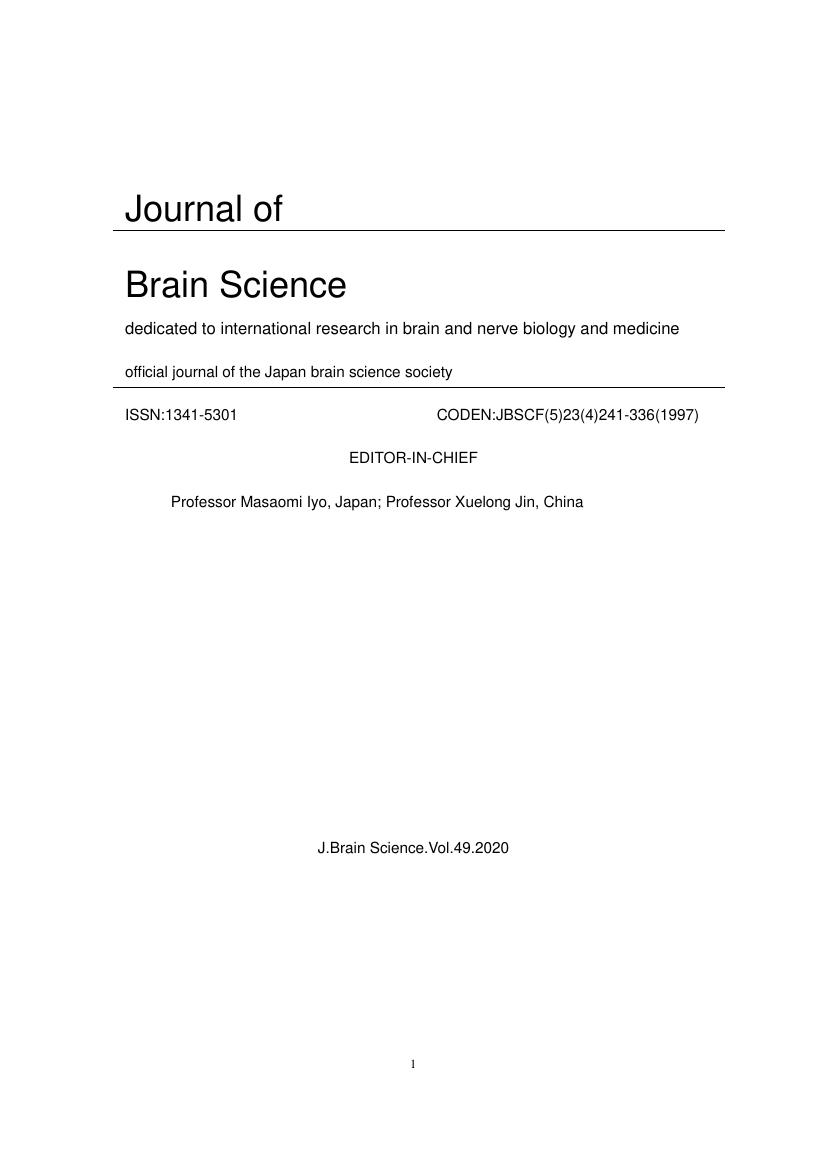1 0 0 0 OA Specific components of child gestures at 14 months are associated with preschoolers’ language skills
- 著者
- Yuko Ibara Tomoko Nishimura Ryuji Nakahara Toshiki Iwabuchi Taeko Harada Akemi Okumura Chikako Nakayasu Nori Takei Kenji J. Tsuchiya
- 出版者
- Japan Brain Science society
- 雑誌
- 脳科学誌 (ISSN:13415301)
- 巻号頁・発行日
- vol.49, pp.5-31, 2020 (Released:2020-12-01)
- 参考文献数
- 41
- 著者
- Yoko Sagawa Tomoko Nishimura Yoko Nomura Toshiki Iwabuchi Taeko Harada Akemi Okumura Chikako Nakayasu Nagahide Takahashi Nori Takei Kenji J. Tsuchiya
- 出版者
- Japan Brain Science society
- 雑誌
- 脳科学誌 (ISSN:13415301)
- 巻号頁・発行日
- vol.49, pp.32-62, 2020 (Released:2020-12-01)
- 参考文献数
- 40
1 0 0 0 OA Influence of unbalanced large head on neurodevelopment in infancy: a longitudinal birth cohort study
- 著者
- Ryuichiro Oshima Kenji J. Tsuchiya Norio Mori Nori Takei
- 出版者
- Japan Brain Science society
- 雑誌
- 脳科学誌 (ISSN:13415301)
- 巻号頁・発行日
- vol.46, pp.34-54, 2016 (Released:2017-05-09)
- 参考文献数
- 35
- 著者
- Norihiro Sakurai Kenji J. Tsuchiya Katsuaki Suzuki Manabu Wakuta Nori Takei Norio Mori
- 出版者
- Japan Brain Science society
- 雑誌
- 脳科学誌 (ISSN:13415301)
- 巻号頁・発行日
- vol.40, pp.28-53, 2013-03-30 (Released:2017-06-01)
- 参考文献数
- 30
Background: Studies have suggested that failure to detect behavioural problems at a young age will directly result in more incidents of problem behaviour as well as serious behavioural problems after school age. Therefore, the early detection of such problems is crucial to prevent difficulties after adolescence. Researchers have attempted to evaluate the proportion of children with behavioural problems based on parent and teacher ratings, although discrepancies between the two sets of ratings have been noted. This study aimed to quantify the discrepancy in ratings between parents and teachers of children regarded as having behavioural problems, and to explore explanatory variables associated with the quantified discrepancy. Methods: The Strength and Difficulty Questionnaire (SDQ) for evaluating child behaviours was completed by parents and teachers of second graders (N=798) in elementary schools recruited by community-based sampling. Among the questionnaires collected, scores for 219 children with behavioural problems, defined as those whose parent or teacher scores were ≥13 points on the SDQ, were analysed. Mean difference in score (discrepancy score) between the parent and the teacher of each participating child was tested, and then the discrepancy score was linearly regressed onto potential explanatory variables. Results: Mean parent rating was significantly higher than mean teacher rating for both boys and girls. For boys with an assigned assistant and with a mother of older age, the discrepancy score was significant; that is, parents gave a lower score (fewer problems) than teachers. In the case of girls, the discrepancy score was significant for those with poor parental attachment; that is, parents gave a higher score (more problems) than teachers. Conclusion: In studies using the SDQ with elementary school students, the relationship of explanatory variables with discrepancy score needs to be taken into consideration and, on this basis, parent and teacher evaluations should be carefully interpreted


